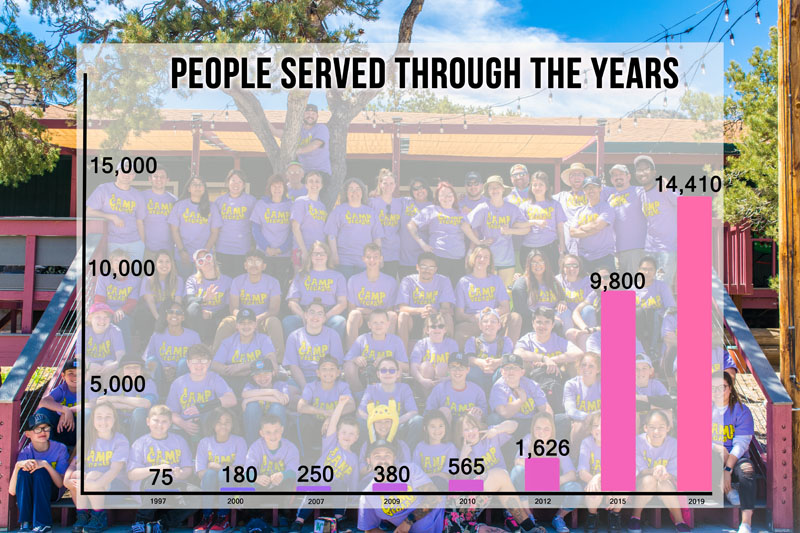Diabetes Facts
Diabetes is a serious, costly, and increasingly common chronic disease that can cause devastating complications that often result in disability and death. Early detection, improved delivery of care, and better self-management are key strategies for preventing much of the burden of diabetes. Type 2 diabetes, formerly considered “adult onset” diabetes, is now being diagnosed more frequently among children and adolescents. This type of diabetes is linked to two modifiable risk factors: obesity and physical inactivity.
Click here for Nevada Diabetes Facts
The following information is provided by the
Total prevalence of diabetes in the United States, all ages 2018
- 34.2 million people—10.5 % of the population—have diabetes.
- 84 million people are at risk for developing type 2 diabetes in the U.S.
- In Nevada Approximately 281,000 or 12.4% of the population has diabetes
- In California Approximately 4 million or 13.4% of the population has diabetes
- Diabetes Mortality by States https://www.cdc.gov/nchs/pressroom/sosmap/diabetes_mortality/diabetes.htm
- Every 17 seconds someone is diagnosed in the U.S. with one of the forms of diabetes.
- 1 out of every 3 dollars in healthcare is spent on complications of diabetes.
- 43% of hospital costs are associated with diabetes.
- Diabetes is the 7th leading cause of death in the U.S.
- Type 1 diabetes is the only disease which requires medication to be taken 24-hours a day that has the potential kill you.
- 1:3 people are living with pre-diabetes and do not know it.
- Type 1 diabetes has nothing to do with eating too much sugar.
About one in every 400 to 600 children and adolescents has type 1 diabetes.
- The global prevalence of diabetes* among adults over 18 years of age rose from 4.7% in 1980 to 8.5% in 2014 (1).
- Between 2000 and 2016, there was a 5% increase in premature mortality from diabetes.
- Diabetes prevalence has been rising more rapidly in low and middle income countries than in high income countries.
- Diabetes is a major cause of blindness, kidney failure, heart attacks, stroke and lower limb amputations.
- In 2016, an estimated 1.6 million deaths were directly caused by diabetes. Another 2.2 million deaths were attributable to high blood glucose in 2012.
- Almost half of all deaths attributable to high blood glucose occur before the age of 70 years. WHO estimates that diabetes was the seventh leading cause of death in 2016.
- A healthy diet, regular physical activity, maintaining a normal body weight and avoiding tobacco use are ways to prevent or delay the onset of type 2 diabetes.
- Diabetes can be treated and its consequences avoided or delayed with diet, physical activity, medication and regular screening, and treatment for complications.
Although type 2 diabetes can occur in youth, the nationally representative data that would be needed to monitor diabetes trends in youth by type are not available. Clinically-based reports and regional studies suggest that type 2 diabetes, although still rare, is being diagnosed more frequently in children and adolescents, particularly in American Indians, African Americans, and Hispanic/Latino Americans.
Deaths among people with diabetes, United States, 2017:
- Diabetes was the seventh leading cause of death listed on U.S. death certificates in 2017. This ranking is based on the 83,564 death certificates in which diabetes was listed as the underlying cause of death.
- Diabetes is likely to be underreported as a cause of death. Studies have found that only about 35% to 40% of decedents with diabetes had it listed anywhere on the death certificate and only about 10% to 15% had it listed as the underlying cause of death.
- Overall, the risk for death among people with diabetes is about twice that of people without diabetes of similar age.
Estimated diabetes costs in the United States in 2018:
Total (direct and indirect): $372 billion
Direct medical costs: $237 billion
Indirect costs: $90 billion (disability, work loss, premature mortality)
The data presented is based on a study by the Lewin Group, Inc., for the American Diabetes Association and are 2018 estimates of both the direct (cost of medical care and services) and indirect costs (costs of short-term and permanent disability and of premature death) attributable to diabetes. This study used a specific cost-of-disease methodology to estimate the health care costs due to diabetes.
Complications form diabetes can include:
-
Eye disease and blindness
-
Skin and dental problems
-
Feet and amputations
-
Stroke
-
Gastrointestinal problems
-
Heart disease
-
Sexual concerns
-
Kidney disease
-
Neuropathy
-
Psychosocial complications
Type 1 (Insulin Dependent Diabetes Mellitus):
Type 1 is one of the most frequent chronic childhood diseases. The incidence of Type 1 is higher than all other chronic diseases of youth. Much has been written about the frequency of childhood AIDS, which is certainly a major health concern. However, the number of children who develop IDDM each year is about 13,000, more than 14 times that seen for cases of childhood AIDS2. The economic impact of Type 1is large, with a cost to age 40 years of almost $40,000 per case3. The risk of devastating complications remains high. Most certainly Type 1 is an expensive and serious condition. Despite its importance, it is only in the past decade that the frequency of Type 1 has been intensively investigated through a joint international effort to map the global patterns of this disease.
Type 2 (Non Insulin Dependent Diabetes Mellitus):
Of the 20.8 million people ( 7 % of the population) approximately 90% to 95% have Type 2. Type 2 diabetes may account for about 90% to 95% of all diagnosed cases of diabetes. It usually begins as insulin resistance, a disorder in which the cells do not use insulin properly. As the need for insulin rises, the pancreas gradually loses its ability to produce insulin. Type 2 diabetes is associated with older age, obesity, family history of diabetes, prior history of gestational diabetes, impaired glucose tolerance, physical inactivity, and race/ethnicity. African Americans, Hispanic/Latino Americans, Native Americans, and some Asian Americans, Native Hawaiian, or other Pacific Islanders are at particularly high risk for type 2 diabetes. Type 2 diabetes is increasingly being diagnosed in children and adolescents.
Gestational Diabetes:
Gestational diabetes is a form of glucose intolerance that is diagnosed in some women during pregnancy. Gestational diabetes occurs more frequently among African Americans, Hispanic/Latino Americans, and Native Americans. It is also more common among obese women and women with a family history of diabetes. During pregnancy, gestational diabetes requires treatment to normalize maternal blood glucose levels to avoid complications in the infant. After pregnancy, 5% to 10% of women with gestational diabetes are found to have type 2 diabetes. Women who have had gestational diabetes have a 20% to 50% chance of developing diabetes in the next 5-10 years.
Other Contributors to Diabetes:
Other specific types of diabetes result from specific genetic conditions (such as maturity-onset diabetes of youth), surgery, drugs, malnutrition, infections, and other illnesses. Such types of diabetes may account for 1% to 5% of all diagnosed cases of diabetes.
The information provided on this page is from the latest statistics from the Center for Disease Control (CDC) and National Institute of Diabetes and Digestive and Kidney Diseases of the National Institutes of Health.






